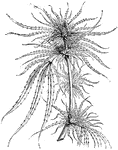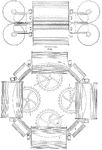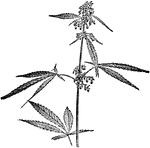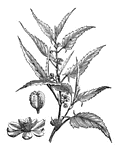Clipart tagged: ‘hemp’

Head of Cannabis Sativa
The common name of cannabis is hemp. Cannabis sativa flowers are greenish in color and grow on long…

Decorticator
"Decorticator for ramie, jute, hemp, flax, and other textiles in green stalks. The machine is quadruple…

Hemp
An illustration of the common hemp plant. Hemp (from Old English hænep) is the common name for…

Hemp Plant
"Hemp adapts itself to diversities of climate, and is cultivated equally under the burning sun of the…

Jute
Similiar the "hemp". The tops server for pot-herbs, the leaves for manure, the stalks for fences, the…

Jute
Jute, also known as Calcutta Hemp, is a fiber obtained from several species of the genus Corchorus of…

Carding Process in the Manufacuring of Jute
After the softening process in the manufacturing of jute, the fibers are about six feet long, and are…

Softening Process in the Manufacturing of Jute
In the manufacturing of jute, the jute fiber must first be softened. The softening machine consists…